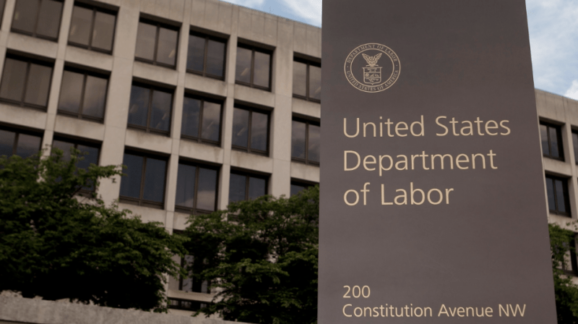CEI Comments on Intermediate Bodies Rule
Re: Docket ID: LMSO-2020-0001, Labor Organization Annual Financial Reports: Coverage of Intermediate Bodies

Dear Director Rosenfield,
On behalf of the Competitive Enterprise Institute, I respectfully submit the following comments. Founded in 1984, the Competitive Enterprise Institute is a non-profit research and advocacy organization that focuses on regulatory policy from a pro-market perspective.
The US Department of Labor should promulgate the Intermediate Bodies rule to protect union members and increase transparency of public sector union finances.
The proposed Office of Labor-Management Standards rule would apply to intermediate unions, those between the national and local level, with only public sector employees. Currently these unions do not file any financial or reporting data to DOL despite using fungible assets that may have started with private sector union member dues.
It is not a burdensome rule. It would require the unions to file simple financial and membership data. This is exactly the sort of data that private sector unions are currently required to report, under the Labor Management Reporting and Disclosure Act of 1959 (LMRDA). Without this information, it is very difficult for public sector union members and those in the private sector that are represented by public sector unions to hold these organizations accountable for their spending. In the absence of the rule, they have no ready way to ascertain how much of their dues is being spent, when, where, and on what.
It is also not a novel rule. The George W. Bush administration promulgated this rule in 2003, and courts have since ruled that the Labor Department has authority to implement it. The DOL’s interpretation of the LMRDA that intermediate unions, which are wholly composed of public sector members, are covered under the statute is as valid now as it was in 2003. In 2008, the United States District Court for the District of Columbia issued a decision holding the DOL’s policy statement adequately explained and justified the agency’s interpretation of the LMRDA.
The rule clearly advances the intent of Congress, which passed the underlying statute with broad bi- partisan support to address widespread union corruption. Congress intended the coverage of the LMRDA to be applied broadly in order to promote union democracy and union financial integrity. In addition, labor unions have significantly changed how they are organized and run since 1959. Few small and independent unions exists today, and intermediate unions are interconnected with national and international unions which have the power to charter, affiliate, disaffiliate, or even put these intermediate bodies under trusteeship.
The union members who are having dues deducted from their checks deserve to know how their unions are spending this money. The rule would ensure a greater number of workers could easily assess whether union leadership spends dues payments prudently and in a way that represents worker interests.
Under the intermediate bodies rule, state and regional unions representing public employees are required to file union financial disclosure Form LM-2 with the Labor Department. These forms provide union members with information on union “assets, liabilities, receipts, salaries, loans to officers,
employees, members or businesses and other disbursements.” Expanding the coverage of the LMRDA allows a private sector local union member to better track disbursements from a national labor union to its state intermediate unions.
Congress was wise to apply the provisions of the LMRDA broadly, because federal and state law lavish unions with monopoly power and other privileges. As such, much of labor unions authority stems from government, not from the voluntary support of workers. Since union members are the real owners of union finances and property, they should be entitled to an accounting of how union leadership spends their funds. Further, providing union members and the public with annual and detailed recording of union financial transactions can help curb embezzlement by union officers and help union members choose leaders who are fiscally responsible.
This transparency rule is important because of the explosion of public sector unionism over the last few decades, and it would be impactful. If it goes through as written, a minimum of 139 unions will have to disclose information. Their disclosure would be valuable to members, taxpayers, and other interested parties.
The Intermediate Bodies rule is simply a commonsense reform that would increase transparency, help to check corruption, and allow for oversight into how organized labor is spending its money.
Respectfully submitted, Iain Murray
Vice President
Competitive Enterprise Institute [email protected]